If we are to usher in the era of cryptocurrency intent, we will need more solvers.
Author: Arjun Chand
Translation: DeepTechFlow
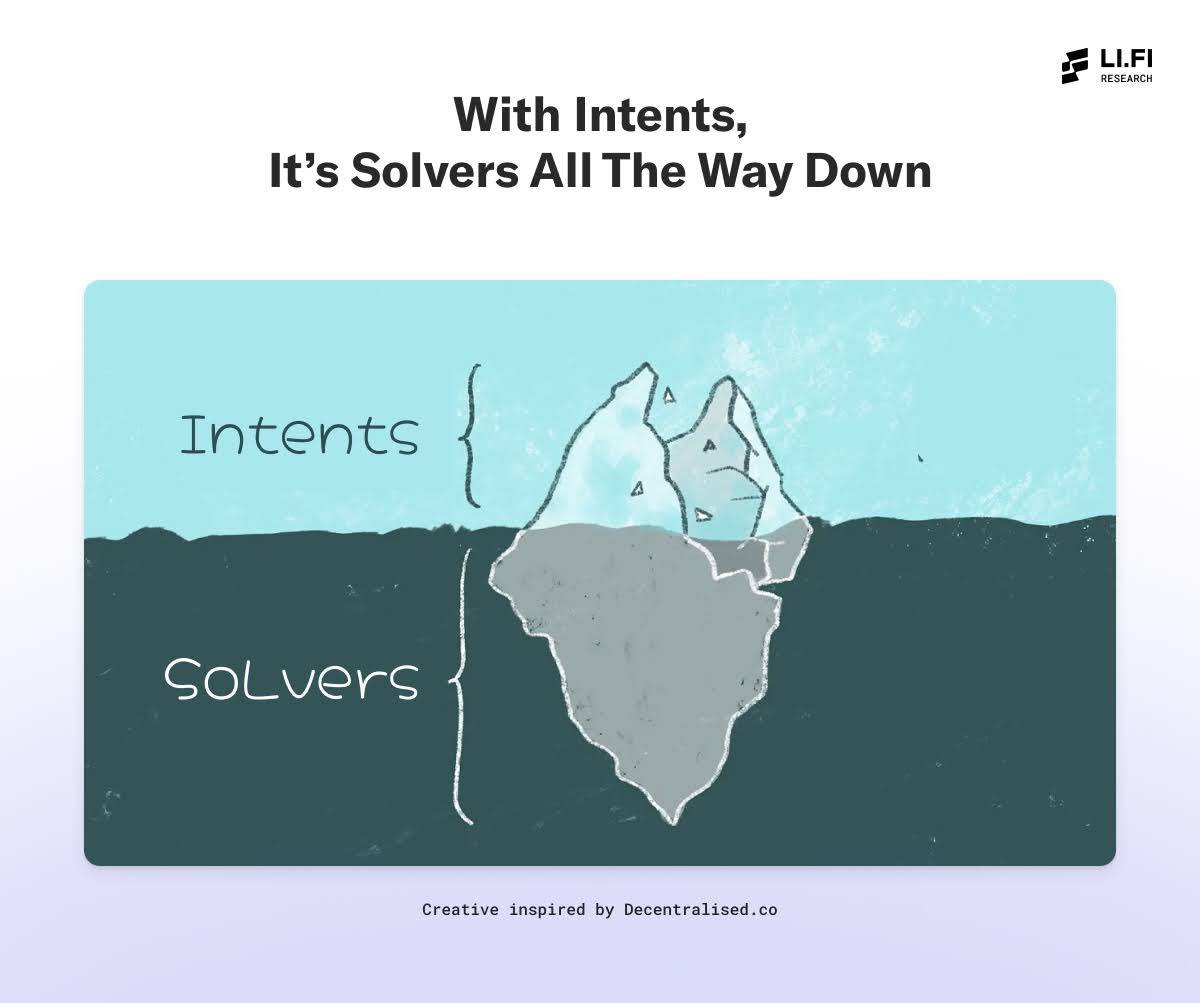
At LI.FI, we have previously discussed that while intent-based bridging technologies can enhance user experience, they may become centralized solutions due to a lack of solvers.
The insufficiency of solvers to execute user intent is a well-known issue. Although the solution may sound simple, just introducing more solvers, in reality, this problem has not been resolved.
We realize that solvers are crucial for intent. If the problem of introducing more solvers is not addressed, we may end up building a future that is very similar to the traditional financial industry—a future where order flow is concentrated in the hands of a few entities.
In this article, we will define the structure of intent-based protocols and explore emerging solutions in the market that have the potential to address the shortage of solvers by solving the pain points of solvers.
Let's delve into it!
Introduction to Intent
Note: If you are already familiar with intent or have read our previous article, please skip this section.
Intent changes the way transactions work, focusing on the user's ultimate goal or "intent" rather than the specific steps to achieve it (which will be detailed later). Intent-based design has two main benefits:
User Experience—The user experience feels seamless and is often fast. Users express an intent, and solvers handle the rest. Gas abstraction and other features make the experience smoother than regular transactions. Instant (JIT) liquidity means no more waiting for minutes for transactions. Overall, the intent-based experience is less complex for users and brings the "one-click" experience that most Web2 applications can provide.
Execution Efficiency—Solvers are typically professional market makers or protocol teams that handle transaction execution for users. The view here is that professional solvers can build trades with the best execution on-chain compared to basic Automated Market Maker (AMM) contracts or end-users operating across multiple applications. Trade batching and other features (such as order matching) make intent execution more capital efficient. For users: no more silly mistakes, wasted resources, and frustrating on-chain experiences. For applications: no longer relying on simple, gas-inefficient contracts to handle complex trade paths. For liquidity providers (LPs), no more idle liquidity stuck in outdated on-chain contracts.
Intent-based design is at the core of achieving chain abstraction—building an application that interacts with multiple chains but feels like a single, interconnected "crypto" experience.
Solvers are crucial for intent
Intent-based protocols have three main parts:
Intent Expression—Users specify the desired outcome in the application. For example, in a bridging application, a user might say they want to swap 1 ETH from Arbitrum to Optimism.
Intent Execution—Solvers compete in auctions to determine the most efficient way to execute the user's intent. The winner (e.g., the Relayer in Across) fulfills the request (sending 1 ETH to the user on Optimism).
Intent Settlement—Solvers are compensated for their service (e.g., receiving the user's 1 ETH on Arbitrum plus a small fee). The intent protocol proves that the intent has been satisfied. However, this is only one aspect of settlement. The bigger picture is that intent settlement also facilitates capital rebalancing for solvers between chains and assets.
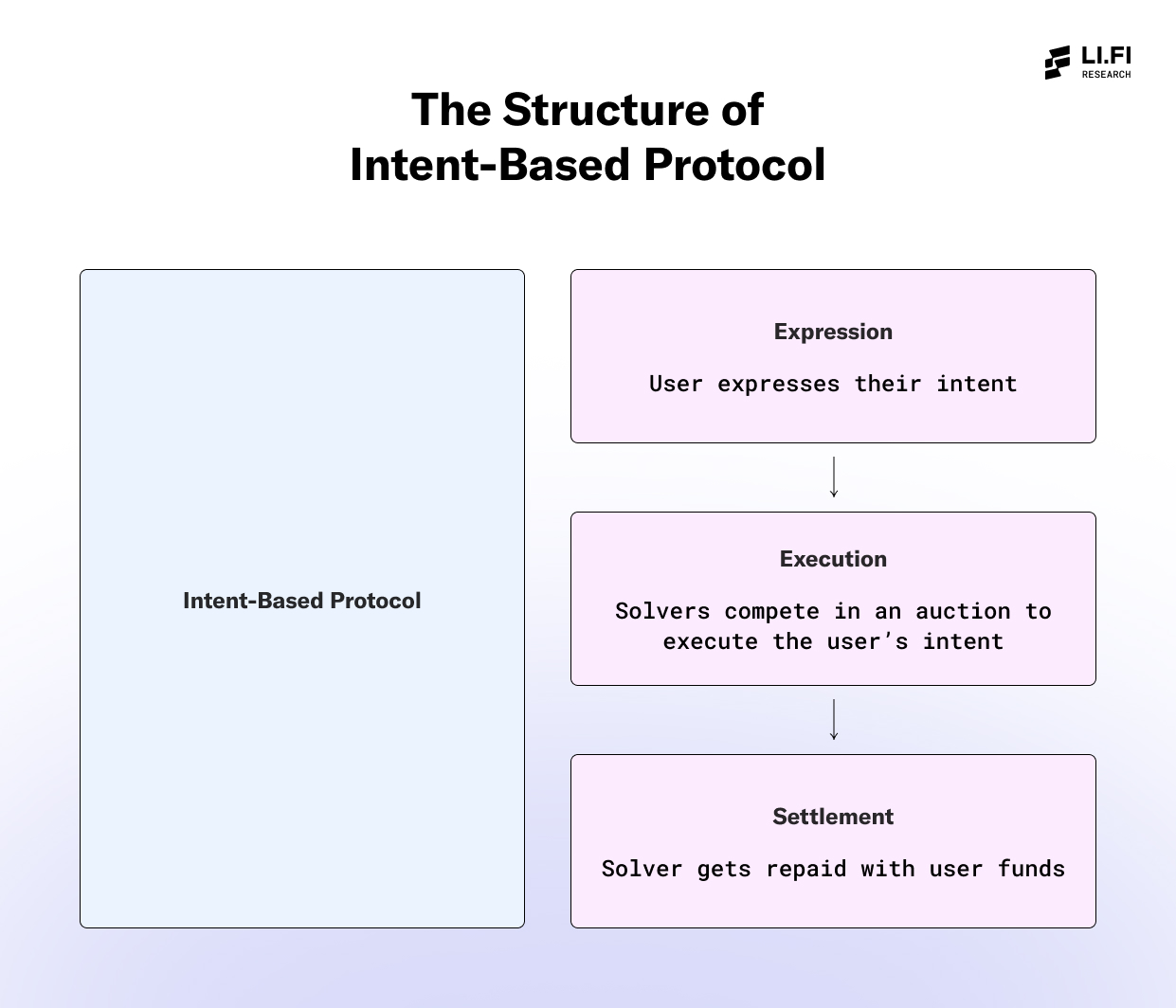
While intent design is smooth, fast, efficient, and simple, there is one problem: a lack of solvers.
Centralization Risks of Intent
Solvers are at the core of intent-based protocols. They are the entities that actually execute user intent, such as transferring assets from Chain A to Chain B.
In an ideal world, solving is a competitive environment, with solvers competing to fulfill intent at the lowest price. However, becoming a solver is not easy and there are some entry barriers:
Staking Requirements: Some intent-based protocols require solvers to stake in order to participate in order flow auctions. For example, in 1inch Fusion, the top 10 solvers (referred to as Resolvers) are allowed to participate in auctions. These solvers are ranked and whitelisted based on their staked 1inch tokens (staked by the solvers themselves or their representatives) and the "unicorn power" of their staking time. The existence of staking requirements is to prevent malicious behavior, but the problem is that these staking requirements may be significant barriers to entry, especially for small players without enough initial capital.
Permissioned Systems: Many intent-based protocols are permissioned, meaning they have decision-makers determining who can participate. For example, in 1inch Fusion, access is based on unicorn power, while in other systems (such as UniswapX Beta), participation may require being whitelisted by the protocol running the auction. These systems prioritize execution quality, ensuring that only reliable solvers are allowed to participate. This approach helps the protocol provide a smooth and trustworthy user experience but also limits the entry of more solvers.
Cost of Complexity: Solvers need to constantly rebalance to fulfill cross-chain intents. Additionally, the number of chains is increasing, making it difficult for solvers to maintain inventory between chains, rebalance, and hold the right assets in the ecosystem. Intent-based protocols are new solutions in the market and are evolving with the emergence of new situations, requiring solvers to update frequently, adding to the complexity.
High Fixed Costs: Writing complex code, managing custom integrations for each intent-based protocol, maintaining cross-chain asset inventory, handling RPC costs, maintaining dedicated hardware to win speed competitions—these are all barriers that increase the complexity and cost for solvers.
Lack of Incentives and Order Flow: Solvers, as rational actors, need to see a return on investment to participate. Taking on risks (such as costs, complexity, and capital) should yield higher returns, otherwise the expected value may not justify the effort. Currently, only a few applications in the intent space have enough order flow to make the effort worthwhile (considering the trade volume and potential profitability compared to the integration hassle). This is why applications with significant order flow (such as 1inch, CoWswap, UniswapX, Across) see enough solver participation and competition, while other applications struggle to attract enough solvers due to limited order flow.
As a result, today we find ourselves in a stark contrast where the participation of solvers in a few top applications contrasts sharply with the entire ecosystem.
For example, let's take a look at two benchmark intent-based protocols: Cowswap for exchange intent and Across for cross-chain intent:
Cowswap has a competitive auction with 16 independent solvers competing for user orders. There is no single solver dominating, and none of the solvers are operated by the CoWswap team.
Across has over 15 solvers (referred to as relayers) actively competing to fulfill users' cross-chain intents. Although Risk Labs continues to operate their own solvers, the data shows that, contrary to early data in our research, no single solver is dominating the auction anymore. There is sufficient competition among solvers.

Centralization Risks Caused by Solver Shortage
Order flow distribution of Across relayers. Note: Solvers operated by Risk Labs are marked in green and dark gray on the chart. Source: Internal data from Across.
Currently, most other intent-based protocols only have well-funded market makers (such as Wintermute) or the protocol teams themselves (who have a vested interest in executing user intents collected on their applications).
There are several reasons for this disparity, but ultimately it comes down to not having enough solvers. This may seem like a small issue, but in reality, it's a centralized time bomb.
What's concerning is that the lack of solvers can lead to centralization issues. This means single points of failure, censorship risks, and potential risks of solvers increasing fees.
This is not the open, permissionless future we envisioned, right? We're essentially slapping a fancy user interface on a centralized system—going against the entire open finance revolution we're trying to disrupt the traditional systems we're trying to overturn.
We need to address this solver bottleneck as soon as possible. More solvers, sooner, are the key to unlocking the true potential of intent-based systems.

The good news is, there are signs of improvement. New projects are launching, and existing teams are collaborating to make it easier for more solvers to join.
In the next section, we will delve into some new solutions aimed at making it easier for solvers at every step of intent-based systems. More solvers, more fun, right?
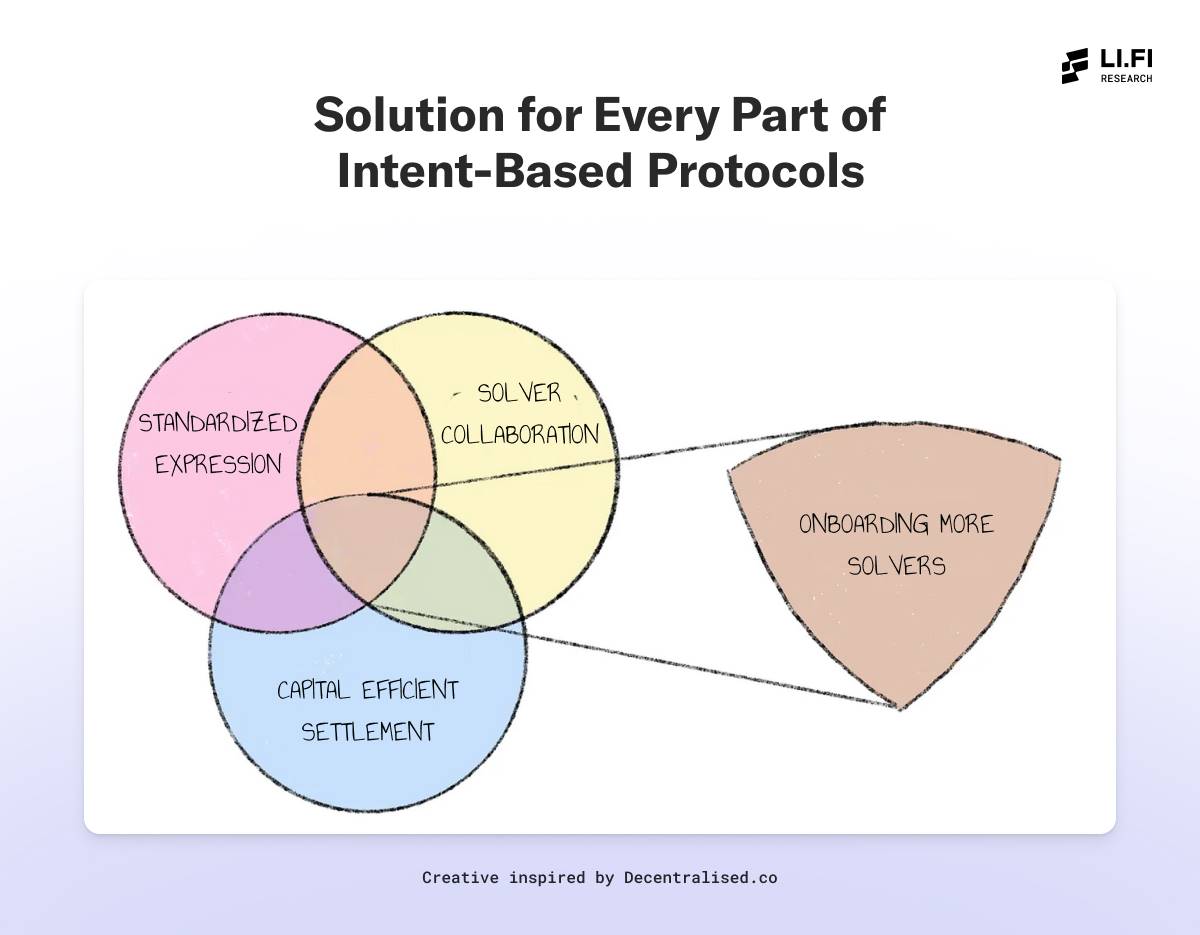
Standardizing Intent Expression—ERC-7683
Currently, there is no well-defined way for intent-based protocols to collect user intent and broadcast it to solvers. This means that each intent-based application has created its own workflow and framework to determine what information should be included in an intent and how to handle it.
This lack of standardization means that solvers need to spend more time understanding the workings of each intent-based protocol (a fragmented sprawl, so to speak). Solvers must spend time and resources to understand each specific system and write custom code to support it.
As the number of intent-based protocols in the market increases, this approach is unsustainable for solvers. Fragmentation leads to isolated solver networks for each application, weakening the network effect flywheel of intent, as we are still building within walled gardens.
To address these issues, Uniswap Labs and Across have proposed ERC-7683, which is a standardized format for cross-chain intent. This standard provides several benefits:
Simplified Integration: Solvers only need to understand one format to fulfill any intent compliant with the ERC-7683 protocol. This significantly lowers the barrier to entry for new solvers.
Universal Network for Existing Solvers: Applications can tap into a pre-existing network of solvers without needing to build and maintain their own network. This also increases competition among solvers to fulfill intent, potentially leading to lower user fees.
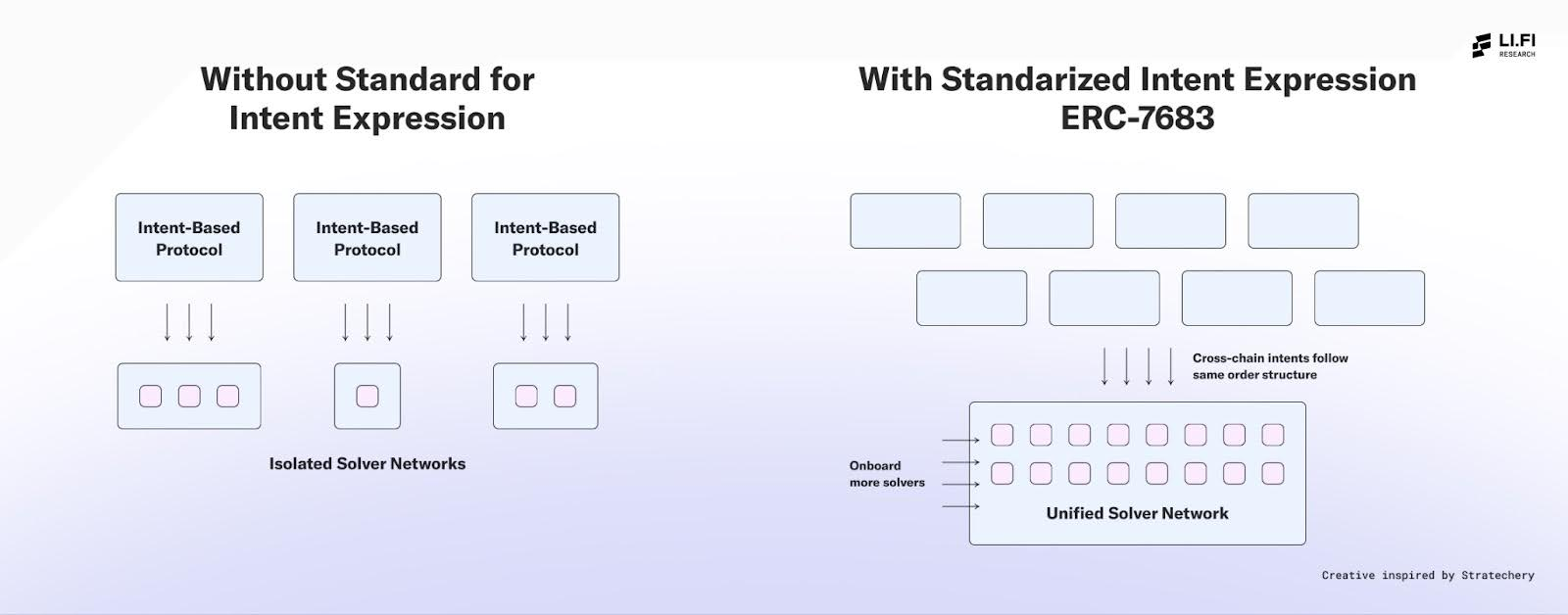
Many solver-based infrastructure protocols, such as Khalani and Nomial, are working to be compatible with the ERC-7683 standard. This development holds promise and is a win-win for all stakeholders. Intent-based applications like UniswapX will benefit from more competition among solvers, and solvers in these infrastructure protocols will have access to more order flow from day one.
This compatibility brings several significant benefits:
New intent-based protocols can launch without the need to establish their own solver network. This is similar to the benefits offered by EigenLayer, allowing projects to lease cryptographic economic security.
Solvers will have the opportunity to compete for order flow in a larger, more globalized intent market, no longer limited to smaller local markets, increasing incentives to attract more solvers.
However, there are also potential drawbacks and limitations that may affect the overall effectiveness and adoption of ERC-7683:
- Possibility of Competitive Standards: The issue with standards is that it's difficult to manage incentives among all participants in the ecosystem. Unless the standard is embedded at the protocol level by the chain itself, the question of whether it truly benefits everyone equally will persist. In the case of ERC-7683, it can be argued that Across and Uniswap benefit more from its adoption, both from a marketing perspective and as early adopters defining the standard. We have seen similar barriers in the past with bridge standards, such as xERC-20 associated with the Connext brand or the OFT standard associated with LayerZero Labs, indicating similar barriers. Despite efforts to define the standard as a trusted neutral, there is still suspicion that certain parties benefit disproportionately. This suspicion often leads to the creation of competing standards, undermining the original intent of establishing a unified standard.
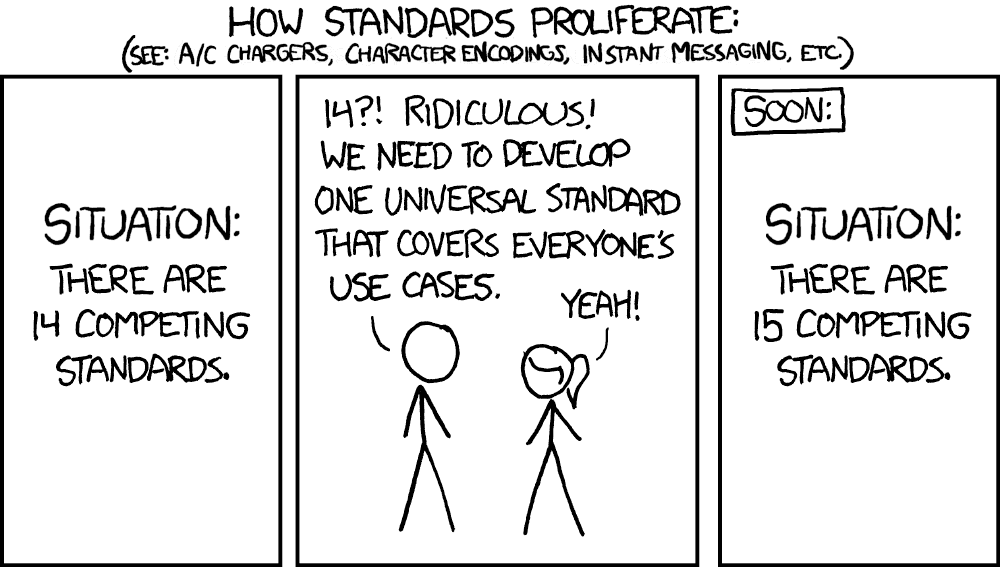
Solver Market Dynamics May Deteriorate: ERC-7683 needs to ensure that it creates a fair competitive environment for both new and existing solvers to compete fairly. If the standard ends up leading to well-funded solvers (such as Wintermute) winning the majority of order flow, the benefits of doing so must be questioned.
Standard Only Covers Ethereum and EVM Ecosystem: Intent-based applications are not limited to Ethereum and the broader EVM ecosystem. Today, Solana's transaction volume often surpasses Ethereum and its L2 on a daily and monthly basis. Consideration must be given to making the standard agnostic to chains and ecosystems, although this will make coordination more challenging.
Standard Only Covers Cross-Chain Transfers and Limit Orders: ERC-7683 primarily focuses on cross-chain intent. This focus may limit its applicability in other forms of intent, potentially restricting its broader use cases in the intent-based protocol ecosystem. However, it's important to consider Across's argument: they believe that most cross-chain operations will be simple transfers rather than complex multi-step operations. These operations typically involve an initial cross-chain transfer, followed by further execution on the target chain. Essentially, the standard caters to the most common cross-chain use case: transfers. Additionally, it can be used in conjunction with single-chain operations to fulfill various intents, rather than the standard itself covering all possible intents.
Collaborative Execution of Intents by Solvers—Using Khalani as an Example
Currently, most intent-based protocols only focus on a limited number of operations on a few chains, such as exchanges and bridges.
To truly become the dominant design architecture, intent-based systems need to go beyond exchanges and bridges, supporting a wider range of operations, including staking, borrowing, fiat deposits, and more.
One way to support more types of intents is by introducing specialized solvers. By introducing solvers specialized in these specific areas, we can ensure that each intent is executed with the highest level of expertise, leading to more optimized outcomes.
These specialized solvers must collaborate rather than work in isolation. This collaboration will allow intent-based protocols to execute a wider range of intents, combining multiple operations to fulfill a broader range of intents.
Platforms like Khalani propose a solution that supports collaboration among solvers. Solvers don't compete with each other; instead, they collaborate to find the best solution for each user intent. This enables numerous smaller, specialized solvers to effectively collaborate.
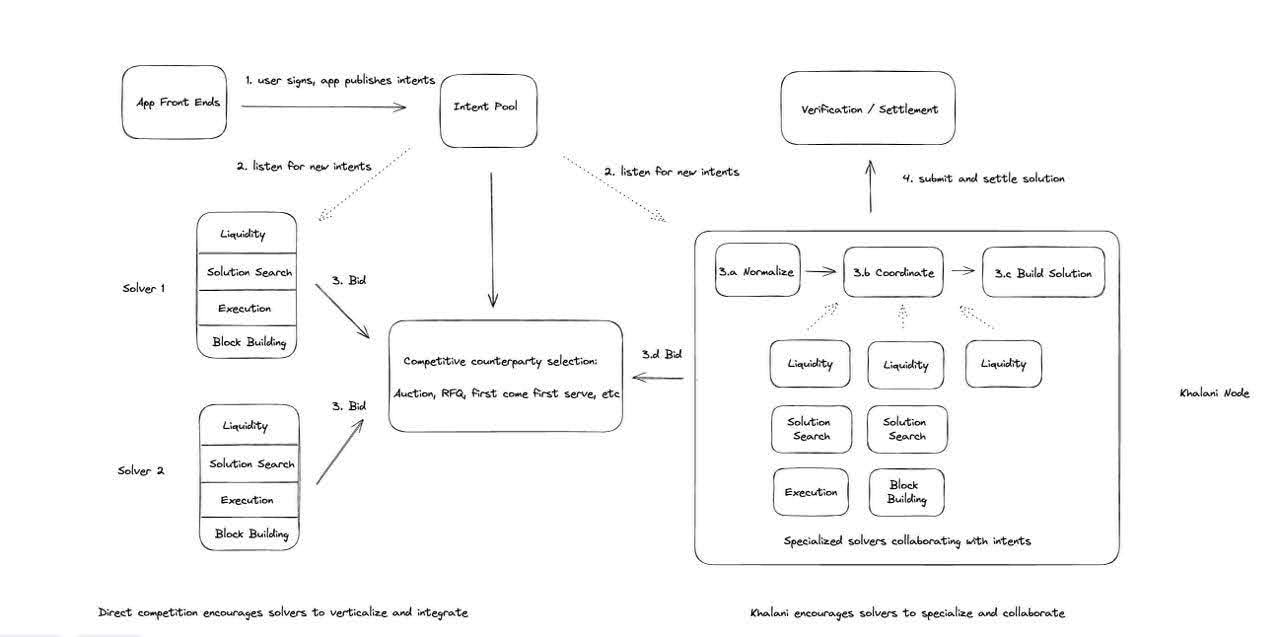
Image: Introduction to the Khalani Platform, Source: Introducing Khalani
As described by Kevin Wang, co-founder of Khalani: Khalani is a peer-to-peer solver "matchmaking" platform. Collaboration allows complex intents to be broken down into smaller specialized intents (or composable intents), which can be handled by individual solvers.
Khalani provides a platform where solvers can combine their resources and expertise to more effectively handle specific user intents. It can be seen as similar to a solver pool akin to a staking pool—by pooling resources, participants can achieve more consistent and potentially higher results than operating individually.
To understand how Khalani facilitates collaboration among solvers, let's consider an example.
Suppose Bob is an Ethereum user holding USDC and wants to obtain ETH on Arbitrum using an intent-based bridge.
Here's how solvers would use Khalani to execute this intent:
Bob submits his intent: "I want to exchange USDC on Ethereum for ETH on Arbitrum."
The intent-based bridge selects an exclusive solver to fulfill Bob's intent, let's call this solver Solver A—the chosen one.
However, Solver A's inventory on Arbitrum is insufficient to fulfill Bob's intent, so it decides to utilize Khalani's solver pool to provide the required capital.
Solver A sends an intent to Khalani, requesting other solvers (or solver combinations) to provide capital on Arbitrum in exchange for Bob's locked funds on Ethereum.
Another solver, Solver B (Arbitrum Whale), holds the inventory on Arbitrum and provides the required assets to Bob.
User-Solver Settlement—Once Solver B fulfills Bob's request, Solver A provides proof to the settlement platform (in this case, the intent-based bridge) to settle with the user. As a result, Solver A receives Bob's USDC on Ethereum.
Solver-Solver Settlement—Solver A provides execution proof to Khalani's chain to settle with Solver B.
While this is a simplified example demonstrating how solvers collaborate to fulfill intents on Khalani, the same process can be used to execute more complex intents.
For example, if Bob is an Ethereum user holding USDC and wants to deposit ETH on a lending platform on Arbitrum, the selected solver can collaborate with multiple specialized solvers on Khalani based on their expertise:
Solver A (Pricing Expert)—Runs specialized software to find the most accurate prices for same-chain or cross-chain trading pairs. It can price the USDC/ETH liquidity based on on-chain and off-chain information.
Solver B (Arbitrum Whale)—Holds inventory on Arbitrum that can be used to provide the required amount of ETH on Arbitrum.
Solver C (Ethereum Executor)—Specialized in executing the best operations on Ethereum, providing price/latency trade-off options to the user. It can be used to execute trades to obtain the user's deposit on Ethereum.
Solver D (Arbitrum Executor)—Specialized in executing transactions on Arbitrum. It can be used to execute local transactions to deposit ETH on the lending platform on Arbitrum.
Similarly, other specialized solvers on Khalani can be invoked to break down complex intents into simplified tasks executed by multiple solvers, rather than relying on a single solver to do all the work.
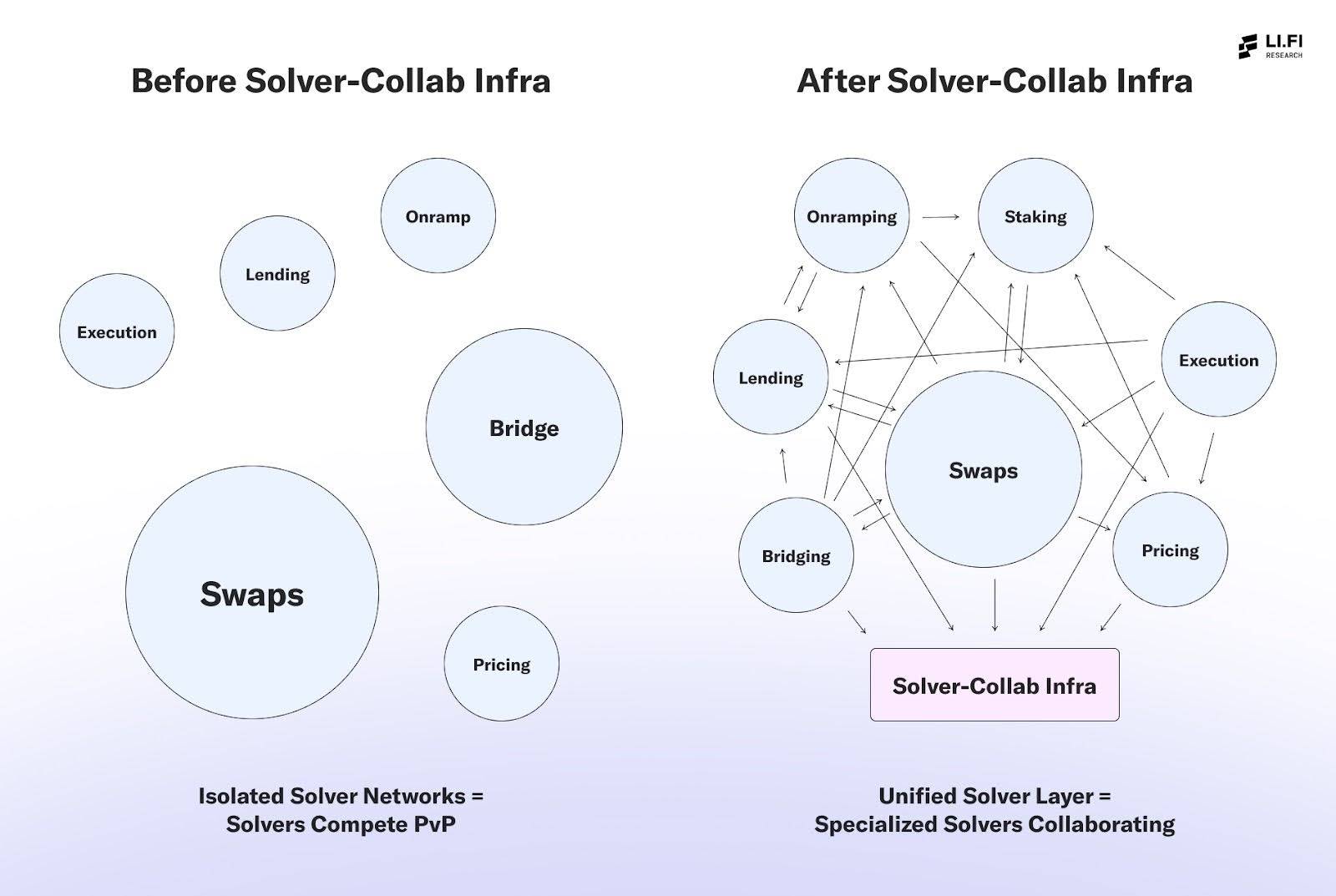
By addressing issues through the Khalani platform, a wide range of intent executions can be achieved, which is a significant breakthrough for the intent-based paradigm. However, there may be potential bottlenecks at each step of this process that could affect the execution of intents.
Errors When Submitting Intent: When the application's user interface (UI) is designed to collect specific intents (such as exchanges or bridges), the scope of user errors is limited because users have clear guidelines when submitting intents. However, designing a UI for collecting broad intents may be more challenging and could lead to users submitting incorrect or incomplete intents, resulting in failed or erroneous intent execution.
Liveness Risk: In intent systems, there is a risk of solvers being unavailable, which could cause the entire system to stall. Additionally, solvers may fail to execute their tasks correctly or in a timely manner, leading to transaction failures.
Limited Solver Availability: There may be a limited number of solvers available for different types of intents within the Khalani infrastructure. This could reduce the likelihood of intent execution and overall efficiency.
Complexity of Coordination Among Solvers: Coordinating multiple solvers can be complex and prone to errors, as it involves many factors such as the availability of specialized solvers, market conditions, and factors related to the intent itself (such as the involved chains and required capital scale).
Risks Related to Atomic Execution: All solver operations are atomic and executed together on the Khalani chain. This means that solvers experience atomicity on Khalani, where either all process parts succeed in a single operation, or none succeed. If any part of the transaction fails, the entire transaction is rolled back, potentially leading to a higher intent failure rate. However, there is no risk of funds being stuck or lost here.
Increased Delay in Solver Collaboration: While off-chain collaboration discovery happens almost instantly, there are some factors that can introduce delays:
Task Dependencies: Some tasks may depend on the completion of other tasks. Coordinating these dependencies and handling errors may introduce delays as solvers need to wait for preceding tasks to complete.
Security and Verification Steps: Implementing security checks and additional steps to verify transactions to prevent fraud or malicious behavior may introduce delays.
To ensure the reliability and overall quality of intent execution, despite these potential delays, some intent-based protocols run permissioned auctions and choose to only collaborate with trusted solvers on a whitelist.
However, it's important to note that this delay is task-dependent and does not change whether tasks are executed by a single solver or multiple solvers collaborating—this is similar for all intent-based protocols that rely on solver execution.
The Flywheel Effect of ERC 7683 and Khalani
Solver infrastructure platforms will be compatible with standards like ERC-7683 because it's a win-win for all participants. The primary goal of these projects and initiatives is to attract more solvers into the ecosystem, and if this can be achieved, compatibility between the two can kickstart a flywheel effect for the intent-based paradigm:
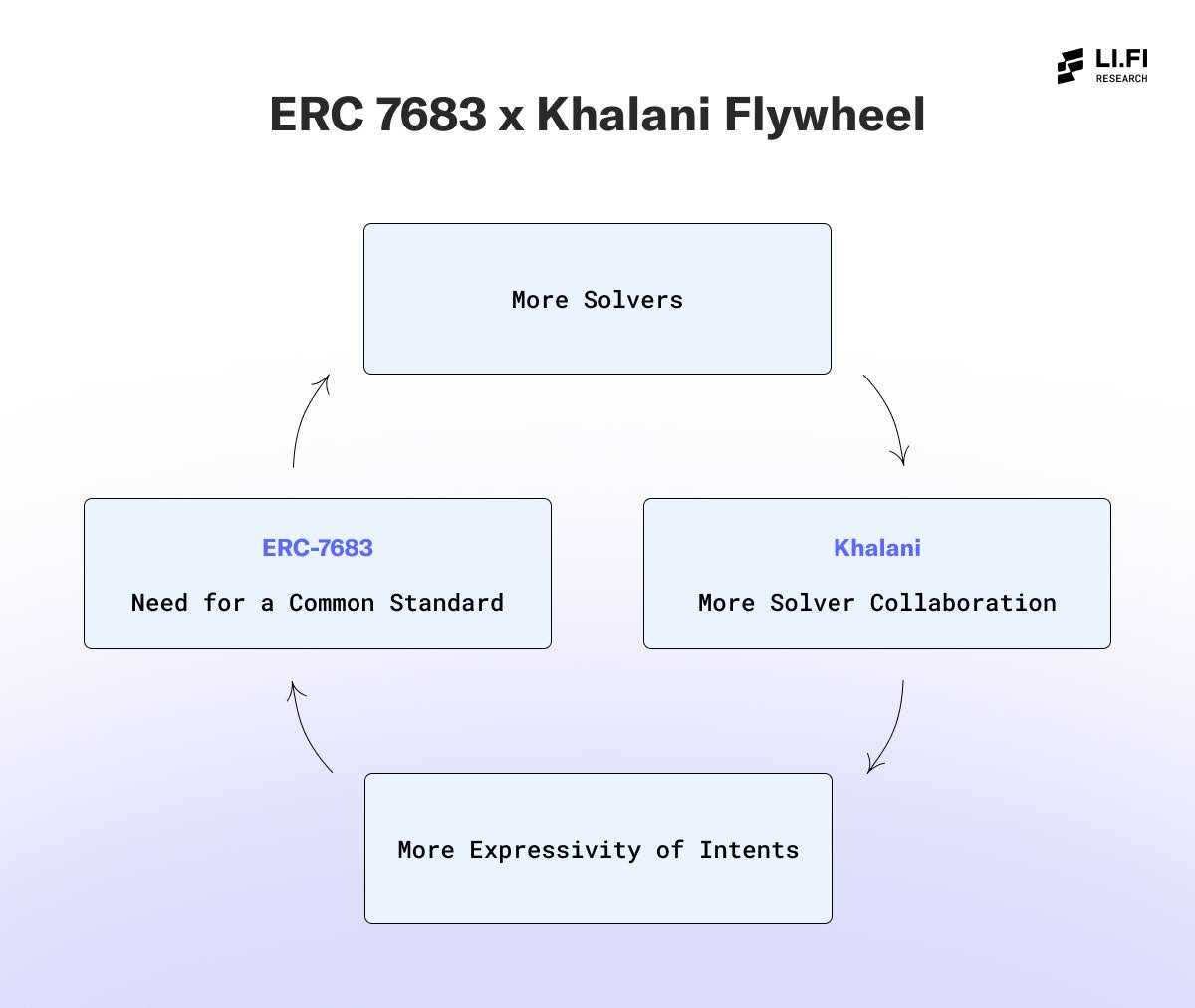
Image: More Solvers—As the number of solvers increases, the variety of intents that can be executed also increases.
More Solver Collaboration: With the emergence of more specialized solvers, opportunities for collaboration also increase. Solvers can combine their specialized skills to handle more complex intents.
Expressiveness of More Intents: Collaboration among solvers increases the expressiveness and complexity of user intents. Users can request more complex operations that require multiple steps and specialized knowledge.
Need for a Common Standard: With the increase in intent expressiveness, intent-based applications need a common standard to ensure that solvers can simply plug into a common interface and collect intents from different applications.
Capital-Efficient Intent Settlement—The Clearing Layer with Everclear as an Example
During the intent settlement process, solvers receive repayment on the source chain where the user generated the intent. This means their funds are spread across multiple chains and need constant rebalancing. This not only makes management cumbersome but also leads to a significant amount of idle funds. Additionally, the more chains involved, the more diluted the liquidity for each solver.
Currently, there is no shared system to coordinate the flow of capital across these chains. Each solver operates like a lone wolf, managing liquidity in this fragmented environment. Everclear was created to address the rebalancing issue for solvers.
Everclear coordinates global liquidity settlement across chains through a "clearing layer"—a decentralized network responsible for coordinating global netting and settlement of capital flows across chains.
The core value proposition of Everclear is the concept of netting.
Netting is a mechanism that aggregates multiple payments between different parties to reduce the number of net payments. In other words, instead of processing each transaction individually, netting calculates the total amount owed between parties, and only the difference needs to be paid. This simplifies the process and reduces the number of payments.
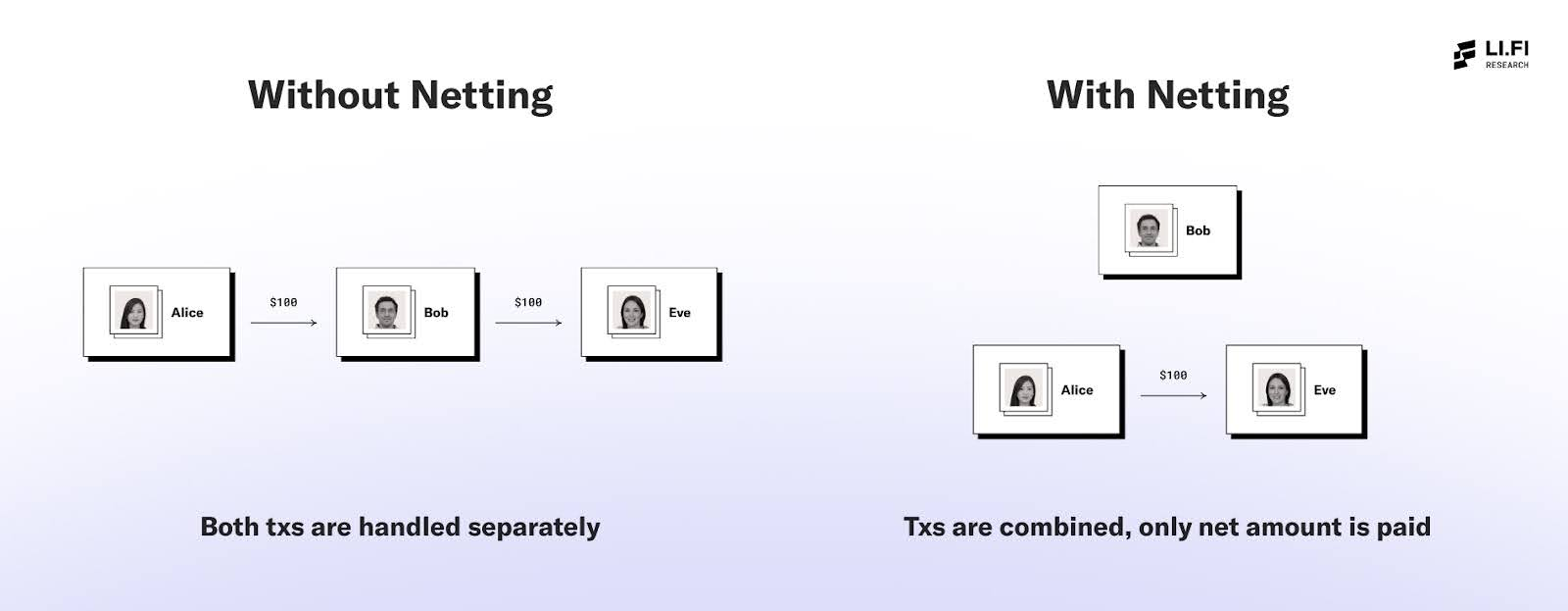
For those familiar with the nomadic lifestyle of cryptocurrencies, you may be familiar with Splitwise—an app that helps groups track shared expenses, such as during travel. The "settle up" feature in Splitwise is a perfect example of netting:
Tracking Expenses: Each group member records their expenses in the app.
Calculating Balances: Splitwise calculates how much each person owes or is owed.
Settling Up (Netting): Instead of multiple back-and-forth payments, Splitwise calculates the simplest way to settle all debts.
This netting concept is also used by remittance companies like TransferWise. Instead of transferring funds across borders, they pair senders and recipients with opposite currency needs and settle with each other. This reduces the actual number of transfers, making it more efficient and cost-effective.
Similarly, Everclear allows solvers to "settle up" across chains, significantly reducing the total number of settlements required, thereby reducing solver costs, inventory, and overall complexity. For those familiar with how CowSwap works, netting essentially matches large-scale demand between solvers across a period of time.
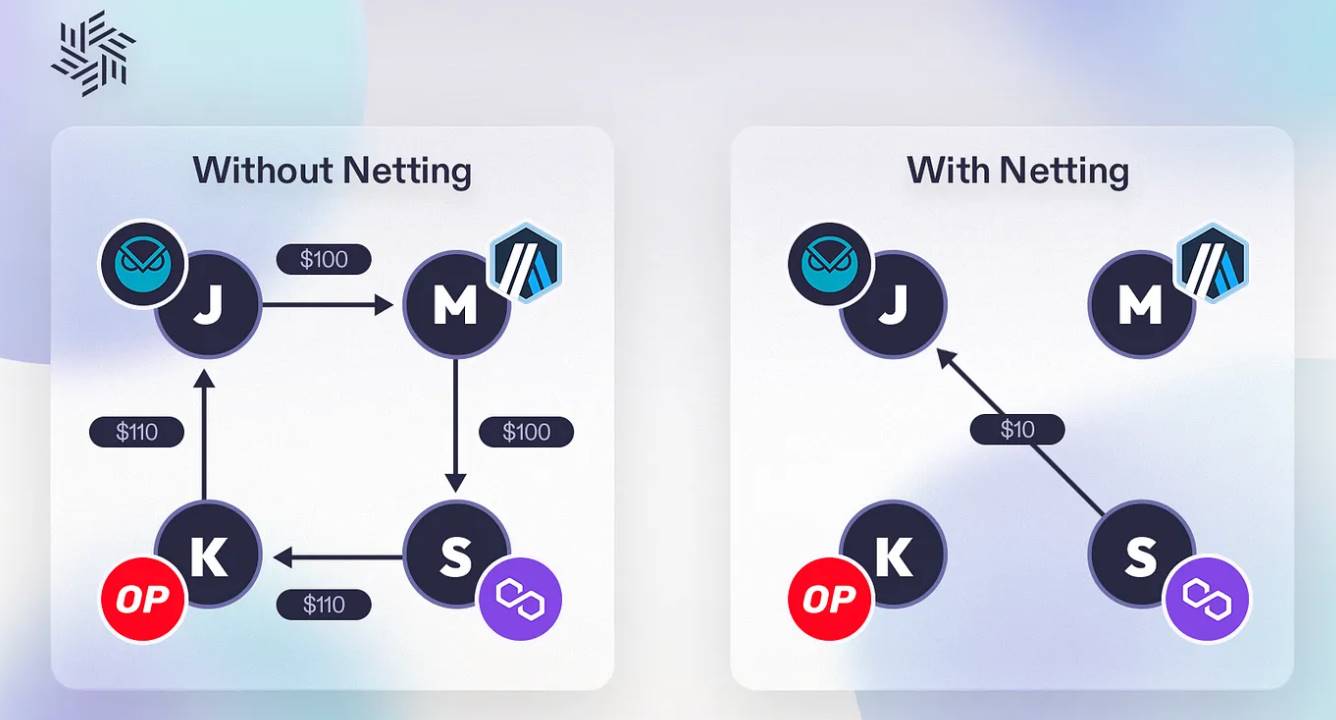
Image: Introduction to the Everclear Platform, Source: Introducing Everclear
Everclear believes that approximately 80% of daily cross-chain capital flows can be handled through netting settlements. This means that for every $1 transferred into a chain daily, $0.80 is transferred out. This indicates that, overall, the volume of funds sent through cross-chain bridges is five times more than actually needed, significantly increasing the frequency of solver rebalancing across chains as they operate in isolation.
Let's take a look at how users (such as intent-based protocols, solvers, or centralized exchanges) leverage Everclear's technology stack.
Consider the example of Alice, who prefers settling on Arbitrum as a solver. Alice needs to complete a 10 ETH transaction from Optimism to Arbitrum. Here's the process with and without Everclear:
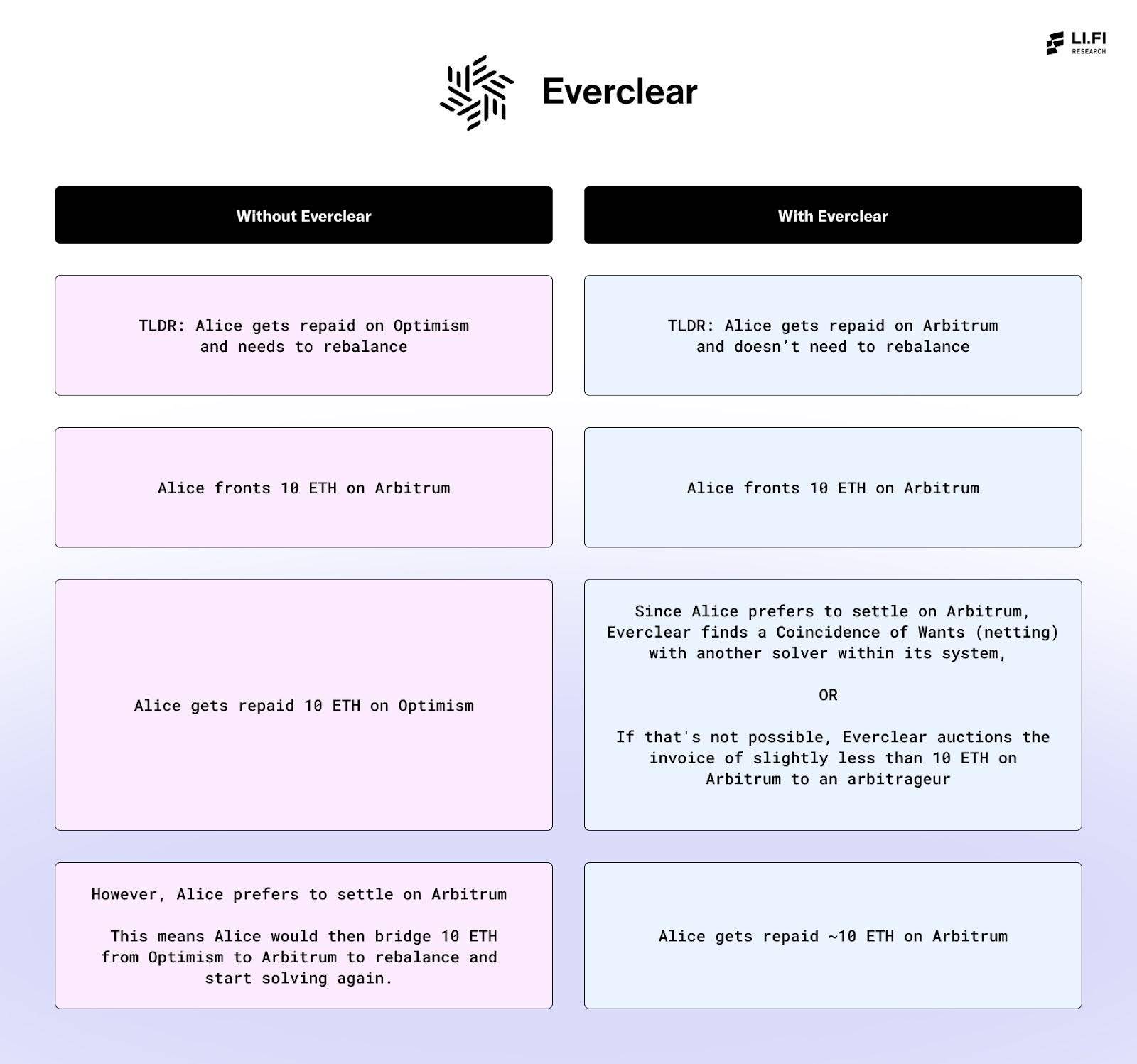
We can see that a clearing layer like Everclear provides benefits to users like Alice (such as solvers and market makers):
Settlement Preference: Alice prefers settling on Arbitrum, and Everclear ensures she receives repayment on Arbitrum, aligning with her preference.
No Rebalancing Needed: Without Everclear, Alice would need to bridge 10 ETH from Optimism to Arbitrum for rebalancing. With Everclear, this step is eliminated, saving time and resources. Handling rebalancing through Everclear simplifies the overall workflow, making it particularly attractive for new participants joining the solver pool.
Reduced Operational Expenses: By eliminating the need for manual rebalancing, Everclear reduces Alice's operational expenses, allowing her to focus on handling more transactions.
Cost Savings: Avoiding bridging funds between chains can save transaction fees and potential slippage, making the process more cost-effective for Alice. This could also lead to more stable operations and potentially higher income.
By addressing a major pain point for solvers, Everclear can incentivize more participation in the ecosystem, ultimately driving a flywheel effect of more solvers joining.
Everclear's positioning in the intent technology stack allows any protocol or infrastructure involving solvers to leverage it to address rebalancing issues and reduce solver costs and operational complexity.
For example, solver infrastructure like Khalani will integrate with Everclear, enabling solvers collaborating through its technology stack to benefit from Everclear for capital-efficient settlement. Therefore, the launch of Everclear is a positive development for the intent-based paradigm as it improves various projects within this ecosystem and expands the market.
To achieve this, Everclear is designed to use EigenDA technology from the Arbitrum Orbit rollup and collaborate with Gelato RaaS. During the alpha mainnet launch (planned for the beginning of Q3 2024), Everclear will operate with some limitations and safeguards:
Permissioned Asset and Chain Support: Initially, only whitelisted chains and assets will be supported, limiting the openness and availability of the system. However, future plans aim to achieve permissionless operation.
Dependency on Eigenlayer: Everclear relies on Eigenlayer for security, but currently does not support slashing. This limits economic security until slashing functionality is implemented. Users must trust that Eigenlayer will implement slashing in the future to enhance economic security. Before this, Everclear plans to use the ISM validator set from Hyperlane for security.
Upgradeable Smart Contracts: Everclear will launch with upgradeable smart contracts. While this provides flexibility, improper management could introduce risks, such as potential vulnerabilities during the upgrade process.
Note: The alpha mainnet is similar to a public testnet phase for Everclear. Full launch will support permissionless chain extensions, allowing chains to define their own security preferences.
Additionally, as a clearing mechanism, Everclear has certain potential risks and trust assumptions:
System Failures: Downtime or failures during upgrades could interrupt the clearing process, leading to delays or erroneous settlements. This would impact all users leveraging Everclear. The estimated clearing window for Everclear is approximately every 3-6 hours, and only prolonged downtime would affect user operations. If such failures persist for an extended period, the main impact would be on user experience rather than fund security, as Arbitrum Nitro has built-in "forceful exit" functionality. In case of downtime, users can use this feature to exit transactions on L1, ensuring they cannot be front-run.
Dependency on Market Makers as Arbitrageurs: Everclear offsets settlements between solvers as much as possible through netting. If netting fails, they turn to arbitrageurs to purchase solver invoices at a discount. To kickstart the system, Everclear is actively collaborating with major market makers to fill this critical role.
Auction Dynamics: Depending on arbitrageurs to auction invoices in case netting fails may introduce volatility and unpredictability in repayments. However, the Everclear team believes this impact is manageable for two reasons:
1) Arbitrageurs will operate based on a predictable pricing curve, reducing uncertainty in their quotes;
2) Having an active and liquid pool of arbitrageurs will ensure competition and potentially stabilize prices during auctions.
The combination of a fixed pricing curve and a liquid arbitrageur ecosystem should help provide more predictable repayment outcomes for solvers when auctions are needed.
Conclusion
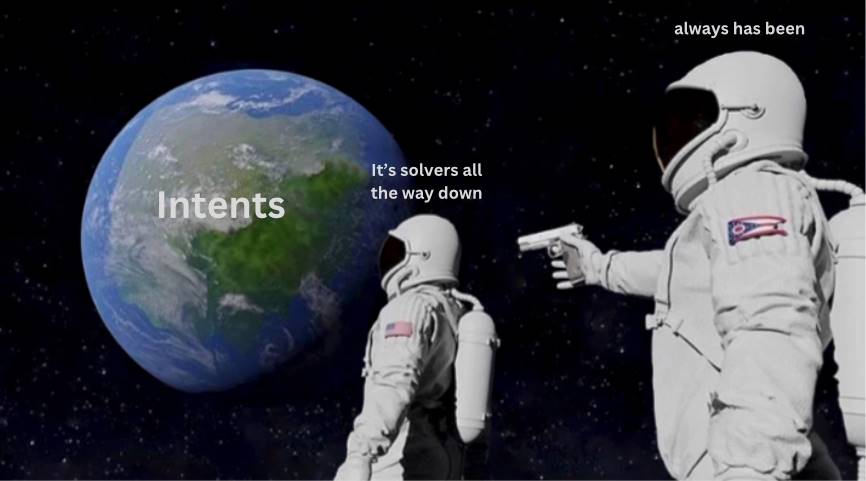
Every now and then, a new idea dares to challenge the status quo. The intent-based paradigm is one such concept, aiming to fundamentally change the way users interact with blockchain.
Currently, this concept is still in its early stages, and only time will tell if it will succeed. But one thing is clear: with intent, comes the need for a large number of solvers; and if we are to usher in the era of cryptocurrency intent, we will need more solvers.
免责声明:本文章仅代表作者个人观点,不代表本平台的立场和观点。本文章仅供信息分享,不构成对任何人的任何投资建议。用户与作者之间的任何争议,与本平台无关。如网页中刊载的文章或图片涉及侵权,请提供相关的权利证明和身份证明发送邮件到support@aicoin.com,本平台相关工作人员将会进行核查。




